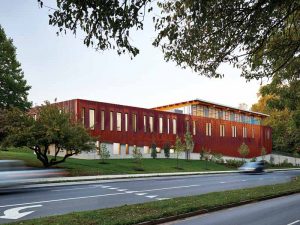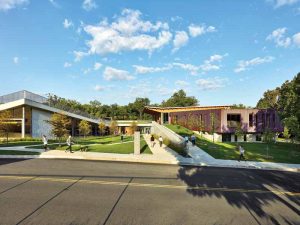
By Larry Peters
When officials in Arlington, Virginia, initiated a project to revitalize Lubber Run Park—the county’s first, established in 1942—their first instinct was to maintain its green space. To achieve this, they wanted to place a new community center at the periphery of the site, separating the structure from natural areas. However, a process of community engagement and mapping site usage, including trails, indoor activities, play areas, and outdoor sports, led project architects VMDO to take the opposite approach. They proposed a design which placed the new Lubber Run Community Center at the heart of the
green space.1
“Arlington is a very involved community. They wanted a say in how this [project] was developed. It was also important to bring neighbors and residents along with us on this journey,” says Nina Comiskey, VMDO associate. “The engagement process led to a design that integrates the center and the park; bringing nature into the building so it can be enjoyed by people of all different ages and abilities.”
To maintain the green space as a park, the project team designed a structure that would integrate with the adjacent stream and woodlands. The project features a low-slung profile and a green roof, easing the transition between the built environment and its natural surroundings. The material palette, including wood beams, copper panels, and exposed concrete walls, gives the facility an elemental appearance.

“We found people responded to materials that are more natural in appearance and are intrinsic to themselves, like concrete, copper, and wood,” says Comiskey. They wanted materials that would “age naturally and change over time, minimizing paints and finishes. Copper fit that bill perfectly, so when the contractor asked us what element we really wanted to keep [during the budgeting process], we said the copper.” Copper’s inherent resistance to corrosion and natural weathering contributes to its long product life, reducing the need for periodic painting or other maintenance efforts often required with less resilient materials.




